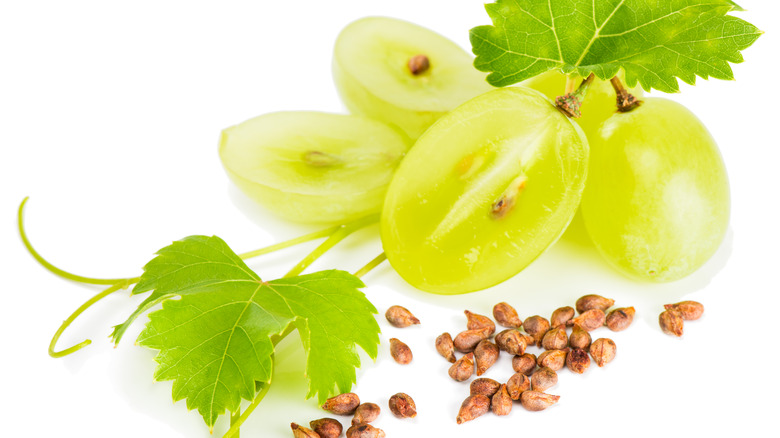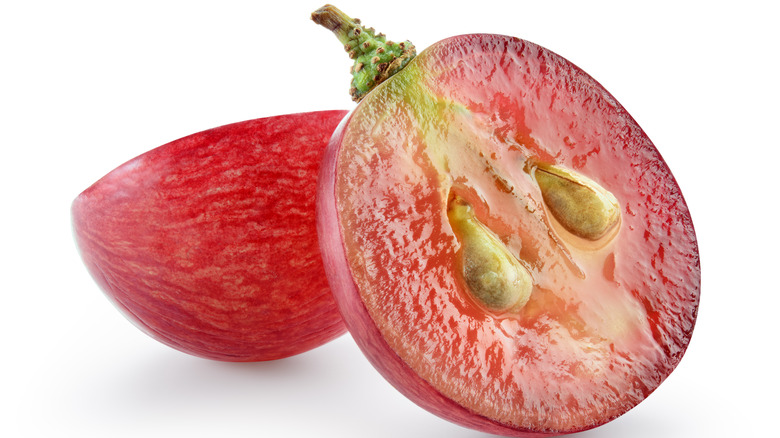Why Do Seedless Grapes Sometimes Have Seeds?
If food is going to surprise you, it absolutely must be a pleasant one. Have you ever bitten into a so-called seedless grape, only to discover seeds where none should've been? The Horticulture Department of Cornell University notes that because consumers prefer their table grapes to be seedless, growers have worked hard to develop and improve the performance of a range of seedless grape varieties. Nonetheless, International Produce Training relates an incident from 2018, in which a retailer reported discovering a lot of Cotton Candy Grapes (which are marketed as seedless) that contained a bunch of seeds.
The tenacious inspector contacted the USDA, curious if the presence of seeds would constitute a defect, as is the case with seedless watermelon, but the agency's answer shocked them. According to this account, the USDA doesn't actually require that seedless grapes be seedless. There are certainly a host of requirements governing the USDA standards for grape categories, but the presence of seeds in seedless grapes isn't considered a defect, which begs the question: Why not? Why don't we insist that seedless grapes be seed-free? It turns out there's a good reason.
All grapes have seeds
Cornell University's Horticulture Department explains this is because all grape varieties (even "seedless grapes") have seeds. It's just that the diaphanous white seeds you often find in seedless grapes contain what the university calls "vestigial seed traces." Growing Produce points out that seedless grapes are more accurately called stenospermic, which means they contain seed traces that are developmentally inert and not viable for growing grape plants.
How developed these seed traces become varies based on a number of factors, including the varieties selected for a particular climate, the year's weather conditions, and even the age of the vine. Grapery, the company behind the distinctive and delicious grape varieties like Cotton Candy and Moon Drops, adds that seed traces can become more developed as the grapes mature on the vine, presenting growers with a bit of a quandary, as harvesting earlier will yield grapes with smaller seed traces and less sweetness, while harvesting later gives you sweeter grapes that may have larger seed traces. Though it may be a minor irritation to encounter seeds in your seedless grapes, it's just a reminder that they're agricultural products, subject to unpredictable weather and sometimes unexpected results.

